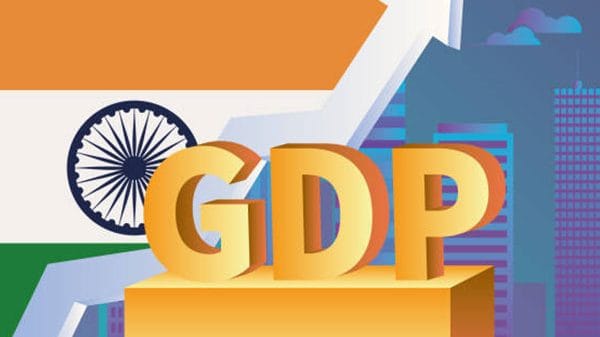Thank you dear subscribers, we are overwhelmed with your response.
Your Turn is a unique section from ThePrint featuring points of view from its subscribers. If you are a subscriber, have a point of view, please send it to us. If not, do subscribe here: https://theprint.in/subscribe/
In a fractured and recalibrating global economy, India is emerging as a promising node in restructured supply chains. From multinational boardrooms to geopolitical strategy tables, India is being cast as the next big manufacturing hub—a democratic counterweight to China, blessed with scale, youth, and ambition. But this optimism, though not misplaced, needs to be paired with institutional realism.
I. The Case for India: Momentum, Markets, and Manufacturing
India’s economic rise is underpinned by both structural advantages and global shifts. With a population of 1.4 billion, two-thirds under 35, India enjoys a demographic dividend unmatched by ageing economies in the West and East Asia. This demographic edge aligns with strong macroeconomic fundamentals: a 7.4% GDP growth in Q4 FY24 and a projected 6.5% annual average over the next five years (IMF, 2024). The success of India’s digital public infrastructure—Aadhaar, UPI, and the India Stack—has further enhanced financial inclusion and governance efficacy.
At the global level, India benefits from geopolitical hedging. The post-COVID “China Plus One” strategy—driven by Western unease over supply chain overdependence and China’s economic assertiveness—has redirected investment to alternate markets. A 2024 Nomura study identifies India as the biggest beneficiary of this shift, particularly in electronics, pharmaceuticals, and textiles. Apple already assembles over 14% of its iPhones in India; this figure is expected to double by 2026. Tesla, Foxconn, and Dell are also deepening their presence.
India’s policy push has complemented these trends. The Production Linked Incentive (PLI) scheme, with a ₹1.97 lakh crore outlay, has mobilised over ₹1.03 lakh crore in investments and created 5 lakh jobs. Export gains are visible in electronics and APIs. Trade agreements with Australia (ECTA) and UAE (CEPA), alongside ongoing FTA talks with the EU and UK, signal India’s intent to integrate globally even while pursuing domestic manufacturing self-reliance.
II. The Friction Beneath the Surface
Despite these advances, India’s manufacturing promise faces enduring structural bottlenecks.
1.Weak Infrastructure and High Logistics Costs
India ranks 38th in the World Bank’s 2023 Logistics Performance Index, lagging behind Vietnam (21st) and China (19th). Logistics costs consume 13–14% of GDP—almost double that of advanced economies. While the Gati Shakti Master Plan and Dedicated Freight Corridors aim to fix bottlenecks, execution delays persist. Port dwell times average 60 hours in India, versus just 27 in China.
-
A Skills Mismatch in the Labour Market
India’s workforce is large but underprepared. Just 4.7% of the working-age population has formal vocational training (NSDC, 2023), far below global benchmarks—Germany (75%), South Korea (96%). Many Skill India centres suffer from curriculum obsolescence and industry disconnects. Without advanced skilling in AI, robotics, and precision manufacturing, India risks being reduced to low-value assembly hubs, unable to climb the value chain.
-
Regulatory Complexity and Policy Volatility
Though India improved on the now-defunct Ease of Doing Business index, on-ground regulatory fragmentation remains a barrier. Multiple clearances, state-centre coordination issues, and ad hoc policy reversals (e.g., retrospective taxes) deter long-term capital. SEZs, labour laws, and environmental norms vary across states, with limited digital harmonisation. For investors, inconsistency can be costlier than inefficiency.
-
Import Dependence in Critical Sectors
Despite ambitions of self-reliance, India remains import-reliant for key technologies—especially in semiconductors and electronics, where over 70% of components are sourced externally, mainly from China and Taiwan. Without upstream investment in R&D, supply clusters, and component ecosystems, India risks remaining a final-assembly hub rather than a full-spectrum manufacturer. The India Semiconductor Mission, while visionary, is still nascent.
III. Strategic Dilemmas: Growth vs. Green, China vs. Vietnam
India’s industrial ambition is also challenged by its energy profile. Coal still accounts for 72% of power generation. Balancing industrial growth with its 2070 Net Zero commitment will require a massive green energy push—into renewables, grid upgrades, and storage.
Moreover, India faces stiff competition. Vietnam, Indonesia, Poland, and Mexico offer logistical advantages, investor-friendly regimes, or proximity to Western markets. India must prove it is not just a backup for China, but a better long-term bet.
IV. What India Must Do: The Reform Checklist
To convert global attention into durable advantage, India must accelerate reforms in five areas:
- Reduce logistics costs to under 10% of GDP by 2030 via full Gati Shakti implementation and complete port digitisation.
- Modernise skilling with dynamic, industry-linked curricula—particularly in high-tech and green sectors.
- Streamline regulations, with single-window digital clearances and harmonised state-centre coordination.
- Develop domestic supply chains, especially in electronics, chemicals, and energy—backed by cluster incentives and fiscal support.
- Align Atmanirbhar Bharat with trade openness, ensuring that self-reliance complements rather than contradicts global integration.
Conclusion: Betting on India Isn’t Enough
India is uniquely placed in this moment of global economic reconfiguration. But opportunity is not destiny. Being seen as an alternative is not the same as being ready. The real wager isn’t just by the world on India—it is India’s own bet on institutional reform, execution capacity, and inclusive modernisation.
The road from promise to performance is narrow and uphill. But if India can stay the course, this could be its defining economic decade.
By Pallavi Das, PhD Scholar, Department for Studies in Economics and Planning, Central University of Gujarat
These pieces are being published as they have been received – they have not been edited/fact-checked by ThePrint.


